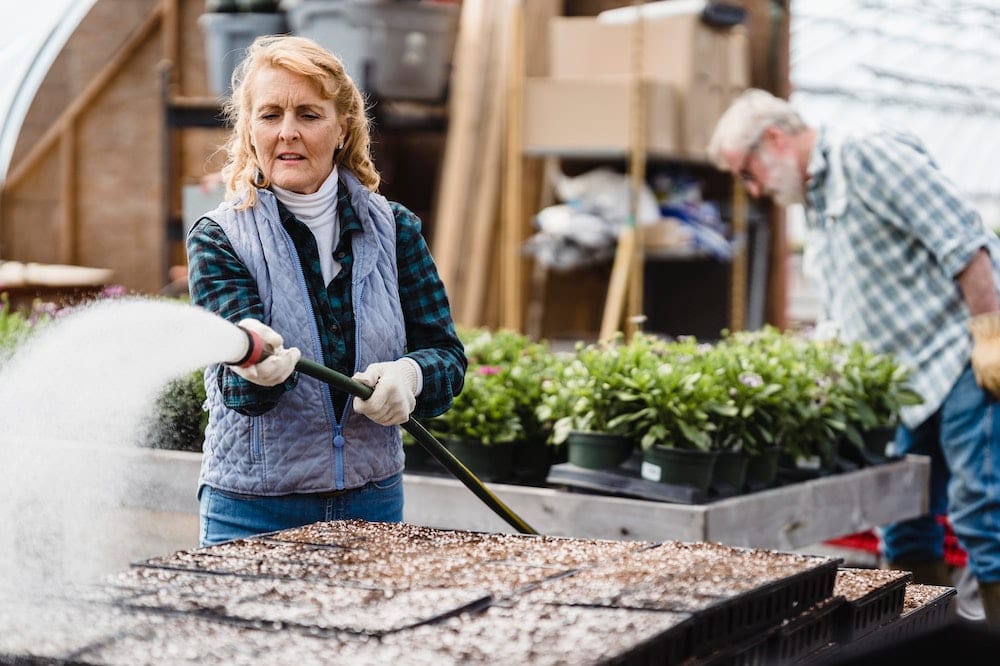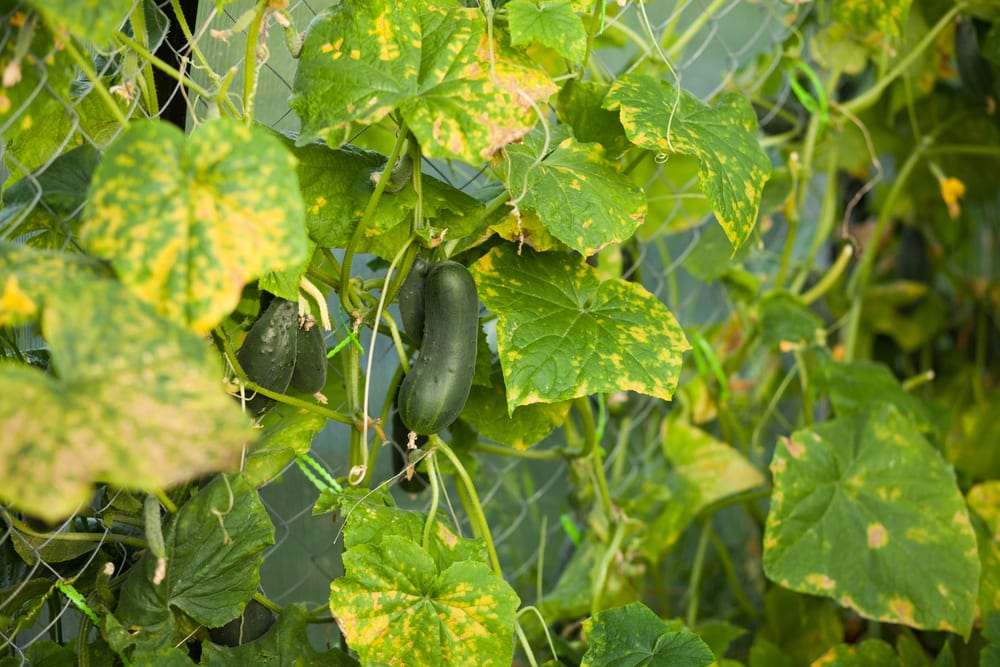Why Cucumber Plants Turn Yellow: 6 Reasons & Fixes
-
Ed Malaker
- Last updated:

Cucumbers are easy to grow almost anywhere in the United States, and they can get quite large, producing a good harvest. However, many people become concerned when the cucumbers or the entire plant turn yellow. If this sounds like your situation, keep reading as we provide you with several reasons that the plant could be changing color and what steps you might be able to take to get things back on track so your plants can reach their full potential.

The 6 Reasons Why Cucumber Plants Turn Yellow
1. You Are Growing Yellow Cucumbers
It may seem simple, but many newer gardeners don’t realize that there are several cucumber varieties. Some produce a yellow or white fruit that looks quite different from the traditional green cucumber, but that is how they grow. If it looks different than the seed packet, a seed might have mixed in with the others at the factory. However, it’s likely a bigger problem if many plants look different. If the cucumbers are supposed to be yellow, the best thing that you can do is let them grow.
2. The Cucumbers Are Overripe

If your cucumber started green but is now turning yellow, it might be overripe. If you leave it on the vine too long, it starts creating seeds for the next year, which can rob the skin of its pigment, causing it to turn yellow. If the cucumber is overripe, it will no longer taste good, so the best thing that you can do is let it continue growing so you have seeds for next year. Learning when to harvest your cucumbers properly can take time, so don’t get discouraged if you accidentally leave them too long.
- Check to see that the cucumbers are the right size before picking. Burpless cucumbers should only be about 1 inch long, while pickling cucumbers can be between 2 and 6 inches long. Slicing cucumbers for salads are usually ready when they are between 6 and 8 inches long.
- If the cucumber still has its flower bloom, it’s not ready for harvesting. Wait until the flower dries up and falls off before harvesting the cucumber.
- Green cucumbers will have a deep green color when it’s time to harvest, and many will develop a bumpy texture.
- Check your cucumbers daily to ensure that you don’t miss any that might become overripe. They often hide behind leaves where you don’t see them until it’s too late
3. There Are Not Enough Nutrients
Cucumbers require plenty of nutrients to stay healthy, so you often have to feed them for the best results. Cucumbers like to have a balanced amount of nitrogen, phosphorus, and potassium, so look for a brand with a 10-10-10 rating. However, adding fertilizer is a temporary solution. You will need to improve the soil by rotating your crops and adding compost and manure to provide important nutrients. If the cucumbers aren’t getting the nutrients that they need, they can start to turn yellow, and you may also notice yellow coloring on the leaves.
4. There Is Not Enough Water

Cucumbers do not have deep roots, so it’s easy for them to dry out. Once the cucumbers run out of water, they will quickly start to wither and can turn yellow. The lack of water will also likely cause the leaves to develop yellow spots. However, it’s also important to ensure that you don’t overwater them, which can cause disease.
5. There Is Disease
Cucumbers are susceptible to several diseases, and some can cause your plant to produce yellow cucumbers, like the cucumber mosaic virus, which creates a yellow mosaic pattern on the leaves. There is no cure for this virus, so the best thing that you can do is remove it from your garden before it spreads. Bacterial wilt can also lead to discolored cucumbers. Insects can cause both diseases, and you can help reduce the risk to your plants by rotating your crops and using beetle traps. Keeping the plants well fed and watered will keep them healthy. Attracting beneficial bugs and birds can also help.
6. There Is a Lack of Pollination

Cucumbers form behind the flower as it grows on the cucumber plant. If bees or other insects do not pollinate the flower enough, the cucumber behind it will turn yellow and fall off. To prevent this from happening to your plants, make sure you plant plenty of flowers around your cucumbers to attract bees, and don’t use pesticides or herbicides if you can help it. If you have an indoor garden, you will have to pollinate the flowers yourself by frequently painting each flower’s inside with a small paintbrush.

Summary
The most likely reason your cucumbers are turning yellow is that they are becoming overripe. It can be quite difficult to know when to harvest when you first start, and cucumbers like to hide until it’s too late to pick them, so it’s a common problem. After that, the most likely reason is that the plant isn’t getting enough nutrients or water, and it’s becoming unhealthy. Adding a balanced plant food can help temporarily, but you want to create better soil using compost and manure to prevent problems from occurring in the future. If you have been growing cucumbers for several years and don’t think that it’s a nutrition or water problem, the cause is likely a disease from insects invading your garden. Discarding the affected plants and rotating the crops next year can help you get back on track.
Featured Image Credit: rudnitskaya_anna, Shutterstock
Contents
